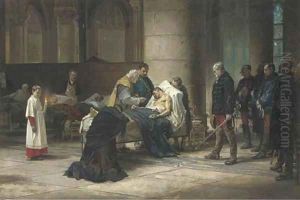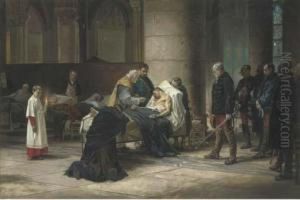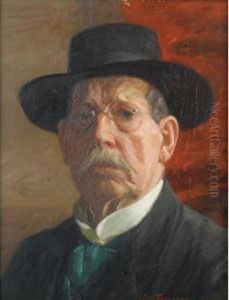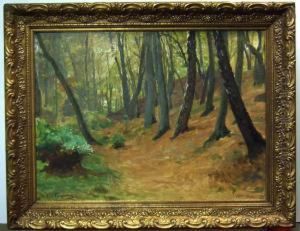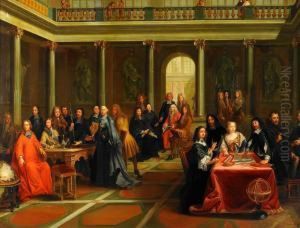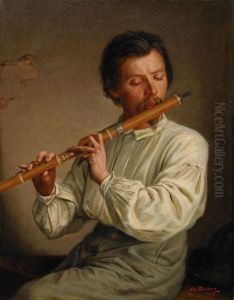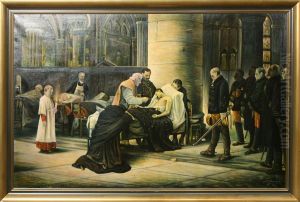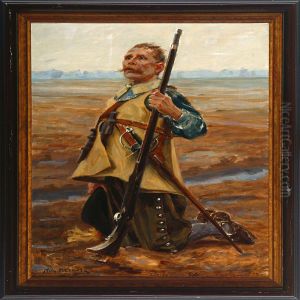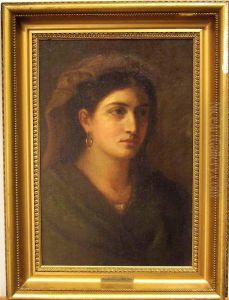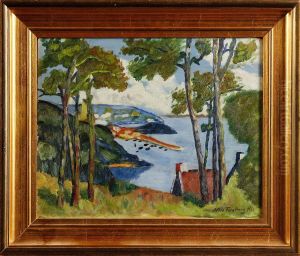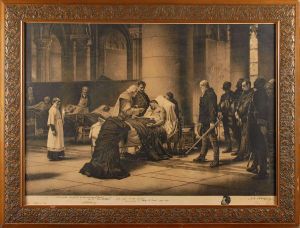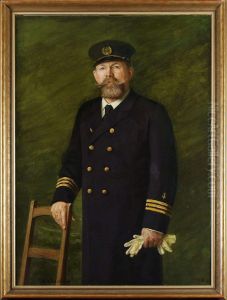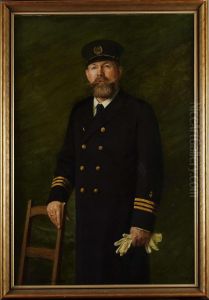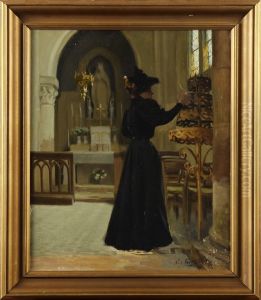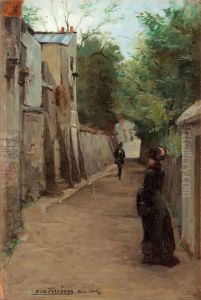Nils The Elder Forsberg Paintings
Nils Forsberg, known as Nils The Elder Forsberg to distinguish him from his son, who was also an artist, was a Swedish painter born in 1842 and passed away in 1934. His life and artistic career spanned a period of significant change in the art world, moving through the phases of Romanticism and into the beginnings of Modernism, though he is most commonly associated with the Romantic nationalistic movement in Swedish art.
Forsberg was educated at the Royal Swedish Academy of Arts in Stockholm, where he honed his skills in painting and drawing. During his time at the Academy, he was influenced by the prevailing Romantic ideals, which emphasized emotion, nature, and national identity. This influence is evident in his works, which often feature landscapes and scenes depicting Swedish rural life, imbued with a sense of romantic nostalgia.
After completing his education, Forsberg traveled extensively, a common practice among artists of his time, seeking inspiration from different landscapes and artistic traditions. His travels took him across Europe, with significant time spent in France and Italy, where he was exposed to new art movements and techniques. Despite these influences, his work remained deeply rooted in Swedish traditions and landscapes.
Upon returning to Sweden, Forsberg became an influential figure in the Swedish art scene. He was not only a prolific painter but also an educator, teaching at the Royal Swedish Academy of Arts where he had once been a student. Through his teaching, he influenced a generation of Swedish artists, imparting the values of close observation of nature and the importance of national identity in art.
Forsberg's contributions to Swedish art were recognized during his lifetime, and he received several commissions for public and private works. His landscapes and idyllic representations of Swedish rural life continue to be celebrated for their beauty and emotional depth. Despite the passage of time, Forsberg's work remains emblematic of the Romantic spirit in Swedish art, capturing the beauty of the Swedish landscape and the soul of its people.
Nils The Elder Forsberg's legacy is preserved not only through his paintings but also through the continuation of his artistic lineage, with his son following in his footsteps. His work is a testament to the enduring appeal of Romanticism in the face of changing artistic trends and remains a beloved part of Swedish cultural heritage.
